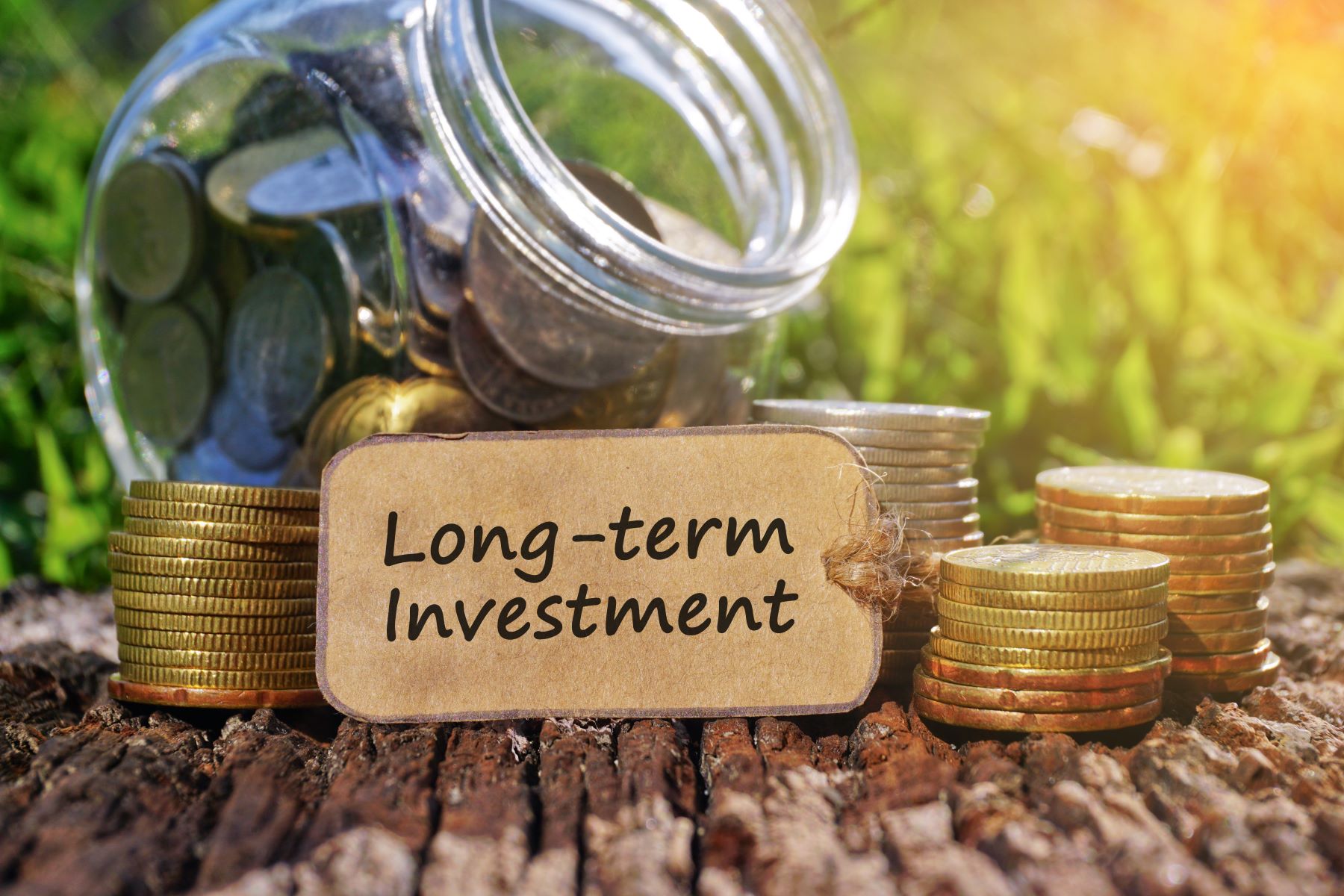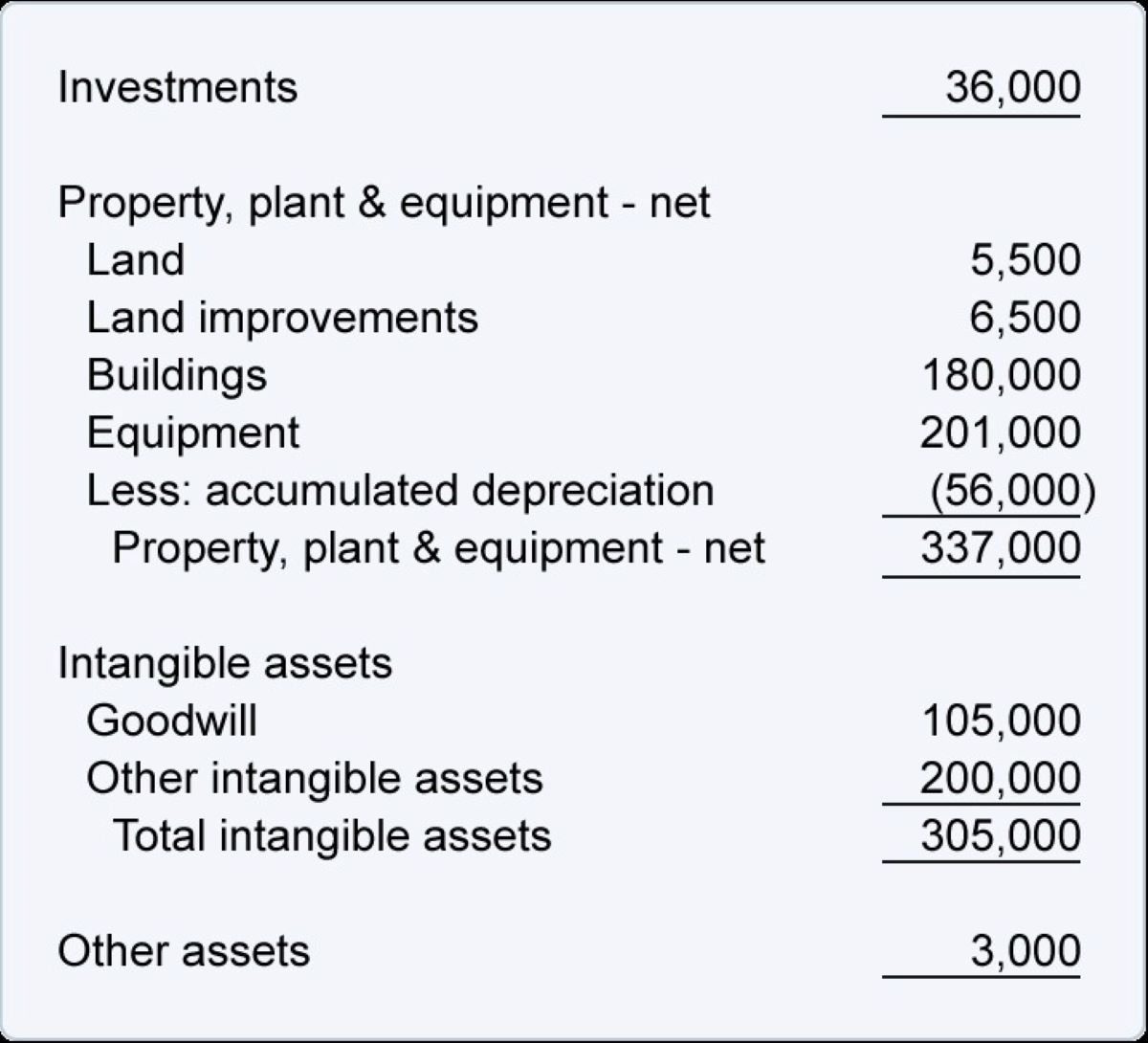

Finance
What Defines A Long-Term Investment?
Published: October 18, 2023
Find answers to what defines a long-term investment in finance. Understand the key factors that determine a successful long-term investment strategy.
(Many of the links in this article redirect to a specific reviewed product. Your purchase of these products through affiliate links helps to generate commission for LiveWell, at no extra cost. Learn more)
Table of Contents
- Introduction
- Understanding Long-Term Investments
- Benefits of Long-Term Investing
- Factors That Define a Long-Term Investment
- Time Horizon in Long-Term Investing
- Risk Profile of Long-Term Investments
- Common Types of Long-Term Investments
- Strategies for Long-Term Investing
- Importance of Patience in Long-Term Investing
- Key Considerations for Long-Term Investment Success
- Conclusion
Introduction
Welcome to the world of long-term investments! If you’re someone who is looking to grow your wealth steadily over time and secure a financially stable future, then understanding and engaging in long-term investments is crucial.
Long-term investments are fundamentally different from short-term investments. While short-term investments are focused on generating quick profits, long-term investments are designed to grow and compound over an extended period. They provide a platform to harness the power of compounding and benefit from the potential of market growth.
In this article, we will explore what defines a long-term investment and delve into the various types and strategies associated with it. We will also highlight the importance of patience and provide key considerations for successfully navigating the world of long-term investing.
Whether you’re a beginner looking to dip your toes into long-term investing or a seasoned investor seeking fresh insights and strategies, this article aims to equip you with the knowledge and tools necessary to make informed decisions and maximize your investment potential.
So, let’s dive in and start our journey into the world of long-term investments!
Understanding Long-Term Investments
Before delving into the intricacies of long-term investments, it’s important to have a clear understanding of what they actually entail.
Long-term investments involve placing money into assets with the expectation of holding them for an extended period, typically five years or more. These investments are not meant for short-term gains but rather for long-term wealth accumulation.
One of the key characteristics of long-term investments is their ability to harness the power of compounding. Compounding refers to the process of reinvesting the returns generated by an investment to earn additional returns over time. Over the long run, this compounding effect can lead to significant wealth accumulation.
Long-term investments also offer the potential for capital appreciation. By investing in assets such as stocks, real estate, or mutual funds, you have the opportunity to benefit from the growth of these investments over time. This growth can be fueled by factors such as market conditions, company performance, and economic trends.
Moreover, long-term investments provide a hedge against inflation. While inflation erodes the purchasing power of money, long-term investments have the potential to outpace inflation and protect the value of your wealth.
It’s important to note that long-term investments are not without risk. Market fluctuations, economic downturns, and individual asset performance can all impact the value of your investments. However, the key is to adopt a long-term perspective, ride out short-term market volatility, and focus on the potential positive trends over time.
Now that we have a solid understanding of long-term investments, let’s explore the benefits they offer and why they are a crucial component of financial planning.
Benefits of Long-Term Investing
Long-term investing offers a multitude of benefits that make it an attractive strategy for wealth accumulation and financial security. Let’s explore some of the key advantages:
- Compounding Growth: One of the main advantages of long-term investing is the power of compounding. As your investments generate returns, those returns are reinvested, generating more returns. Over time, this compounding effect can lead to exponential growth and significantly increase your overall wealth.
- Greater Potential for Returns: Long-term investments have the potential to deliver higher returns compared to short-term investments. By staying invested for an extended period, you are giving your investments time to weather short-term market fluctuations and benefit from the overall growth of the market.
- Reduced Transaction Costs: Long-term investing often involves a buy-and-hold approach, minimizing the need for frequent buying and selling of investments. This reduces transaction costs like brokerage fees, which can eat into your investment returns, especially in the case of short-term trading.
- Tax Advantages: Long-term investments may offer tax advantages. In many countries, capital gains taxes on long-term investments are lower than those on short-term investments. This can result in significant tax savings when you eventually sell your investments.
- Diversification: Long-term investing allows you to diversify your investment portfolio across different asset classes such as stocks, bonds, real estate, and commodities. Diversification helps to spread risk and reduces the impact of a single investment’s performance on your overall portfolio.
- Opportunity to Invest in Growth Sectors: With a long-term investment horizon, you have the opportunity to invest in sectors that are expected to experience significant growth over time. This can potentially lead to substantial gains as these sectors expand and flourish.
In summary, long-term investing offers the advantage of compounding growth, higher potential for returns, reduced transaction costs, tax advantages, diversification, and the opportunity to invest in promising growth sectors. By taking advantage of these benefits, you can position yourself for long-term financial success and build a prosperous future.
Factors That Define a Long-Term Investment
Several factors contribute to defining an investment as long-term. Understanding these factors is essential in distinguishing long-term investments from short-term ones. Let’s explore the key factors that define a long-term investment:
- Time Horizon: A significant factor in determining a long-term investment is the time horizon. Typically, investments held for five years or more are considered long-term. This extended period allows for the potential growth and compounding of the investment over time.
- Objective: The objective of a long-term investment is another defining factor. Long-term investments are primarily focused on wealth accumulation, portfolio growth, and meeting future financial goals, such as retirement planning or funding education expenses. These objectives require a patient and strategic approach, emphasizing a long-term investment strategy rather than seeking short-term gains.
- Risk Tolerance: Long-term investments are often associated with higher-risk tolerance. Since the investment horizon is longer, investors have the opportunity to ride out market fluctuations and recover from short-term losses. Higher-risk investments such as stocks or equity-oriented funds are more commonly selected for long-term investment goals, as they historically offer better returns over extended periods.
- Diversification: A diversified investment portfolio is crucial for long-term investments. By spreading investments across different asset classes and sectors, investors can reduce risk and enhance returns. Diversification helps protect the portfolio from the impact of a single investment’s poor performance.
- Steady and Consistent Contributions: Long-term investments often involve regular contributions over an extended period. By consistently investing money over time, investors can take advantage of dollar-cost averaging. This strategy helps to offset market volatility and potentially lower the average cost of investments.
- Asset Selection: The selection of assets also plays a role in defining a long-term investment. Assets like stocks, bonds, mutual funds, real estate, and index funds are commonly associated with long-term investing due to their potential for growth and compounding over time.
By considering these factors, investors can identify and define their long-term investments accurately. Understanding the time horizon, investment objectives, risk tolerance, diversification, contribution strategy, and asset selection are key elements in crafting a successful long-term investment plan.
Time Horizon in Long-Term Investing
Time horizon is a critical factor to consider in long-term investing. It refers to the length of time an investor expects their investments to remain untouched before needing to access the funds. The time horizon plays a significant role in determining the suitable investment strategies and asset allocation for an individual’s financial goals. Let’s explore the importance of time horizon in long-term investing:
1. Planning for Financial Goals: The time horizon helps investors align their investments with specific financial goals. For example, if an individual is saving for retirement, which is typically several decades away, a longer time horizon allows them to build a more aggressive and growth-oriented investment portfolio. On the other hand, short-term financial goals, such as saving for a down payment on a house within the next two years, require a more conservative investment approach to ensure capital preservation.
2. Maximizing the Power of Compounding: The longer the time horizon, the greater the potential for compounding growth. Compounding occurs when the returns generated by an investment are reinvested, allowing for exponential growth over time. By starting early and giving investments ample time to compound, investors can significantly increase their wealth and achieve their long-term financial goals.
3. Weathering Market Volatility: Long-term investing allows investors to ride out short-term market fluctuations. Over longer periods, the impact of market downturns tends to diminish as markets tend to have cycles of growth and recovery. By staying invested and not succumbing to short-term market volatility, investors can benefit from the overall growth of the market, resulting in potentially higher returns over time.
4. Adjusting Risk Tolerance: The time horizon influences an investor’s risk tolerance. Long-term investments provide the flexibility to take on more risk since there is ample time to recover from any potential losses. Investors with longer time horizons can afford to allocate a higher percentage of their portfolio to growth-oriented assets, such as stocks, which historically offer higher returns but also come with increased volatility.
5. Monitoring and Reviewing Investments: The time horizon also determines the frequency and level of monitoring required for investments. Long-term investments generally require less frequent monitoring compared to short-term investments. Investors should review their long-term investment strategy periodically, making adjustments as needed to align with changing financial goals and market conditions.
Overall, the time horizon in long-term investing is a crucial factor that influences asset allocation, risk tolerance, and investment strategy. By understanding the importance of time horizon and aligning investments accordingly, investors can optimize their chances of achieving their long-term financial objectives.
Risk Profile of Long-Term Investments
While long-term investments offer the potential for higher returns and wealth accumulation, it’s important to acknowledge that they also come with their own set of risks. Understanding the risk profile of long-term investments is crucial for effective portfolio management and making informed investment decisions. Let’s explore the key aspects of the risk profile associated with long-term investments:
1. Market Volatility: Long-term investments are susceptible to market volatility, which can result in temporary declines in the value of investments. Market fluctuations are a natural part of the investing landscape, and it’s important to remain calm and focused on the long-term goals rather than reacting to short-term price movements.
2. Inflation Risk: Over the long term, inflation can erode the purchasing power of money. Long-term investments need to outpace inflation to maintain the real value of the invested capital. Holding investments that historically offer higher returns can help mitigate inflation risk and protect the purchasing power of your investments.
3. Economic Factors: Economic factors, such as recessions or economic downturns, can impact the performance of long-term investments. These factors can have short-term negative effects on investment returns. However, it’s important to remember that over the long run, economies tend to recover and grow, potentially leading to positive investment returns.
4. Sector and Company Specific Risks: Investing in specific sectors or individual companies carries certain risks. Changes in industry trends, regulatory frameworks, or poor company performance can impact the value of investments. Diversification across sectors and companies can help mitigate the impact of sector or company-specific risks on the overall portfolio.
5. Liquidity Risk: Long-term investments may have limited liquidity. Some investments, such as real estate or certain types of bonds, can have longer holding periods or may be less liquid than others. It’s important to consider your liquidity needs and have a well-balanced portfolio that provides access to liquid assets for any short-term needs.
6. Interest Rate Risk: Changes in interest rates can impact the value of certain long-term investments. For example, in a rising interest rate environment, the value of existing bonds may decline. Understanding the potential impact of interest rate changes on your investment portfolio is crucial for managing risk effectively.
It’s important to note that while long-term investments come with risks, they also have the potential for higher returns. By having a diversified portfolio and maintaining a long-term perspective, investors can manage and mitigate risks and position themselves for long-term investment success. Regularly reviewing and rebalancing the investment portfolio can help align the risk profile with the desired financial goals and changing market conditions.
Common Types of Long-Term Investments
When it comes to long-term investing, there are various types of investment options available to suit different risk profiles and financial goals. Understanding the common types of long-term investments can help you make informed decisions and build a diversified portfolio. Let’s explore some of the most popular types of long-term investments:
1. Stocks: Stocks represent ownership in a company and offer long-term growth potential. Investing in individual stocks or exchange-traded funds (ETFs) allows you to participate in the growth and profits of well-established companies. Stocks can provide both capital appreciation and dividends over time, making them a popular long-term investment choice.
2. Bonds: Bonds are debt securities issued by governments, municipalities, or corporations. They are considered fixed-income investments and typically offer a fixed interest rate over a specified period. Bonds are considered more conservative than stocks and can provide regular income through interest payments. They are often used to diversify a long-term investment portfolio and provide stability and income.
3. Mutual Funds: Mutual funds pool money from multiple investors to invest in a diversified portfolio of stocks, bonds, or other assets. They are managed by professional fund managers and provide access to a wide range of investment options. Mutual funds offer diversification and are suitable for investors looking to benefit from professional expertise and a hands-off approach to investment management.
4. Exchange-Traded Funds (ETFs): ETFs are similar to mutual funds but trade on stock exchanges like individual stocks. They offer diversification and can track specific indices, sectors, or asset classes. ETFs provide flexibility, as they can be bought and sold throughout the trading day at market prices.
5. Real Estate: Real estate can be a long-term investment option that offers the potential for both income and capital appreciation. This can be achieved through rental income from properties or by investing in real estate investment trusts (REITs). Real estate investments can provide a hedge against inflation and diversify a long-term investment portfolio.
6. Index Funds: Index funds are passively managed funds that aim to replicate the performance of a specific market index, such as the S&P 500. They offer broad market exposure and typically have lower fees compared to actively managed funds. Index funds are a popular choice for long-term investors seeking a low-cost and diversified investment option.
7. Retirement Accounts: Retirement accounts, such as 401(k)s and Individual Retirement Accounts (IRAs), are designed specifically for long-term retirement savings. These accounts offer tax advantages and various investment options, allowing individuals to build a nest egg over time while enjoying tax benefits.
These are just a few examples of the common types of long-term investments. It’s important to research and consider your individual risk tolerance and financial goals before selecting the appropriate investment options for your long-term investment strategy.
Strategies for Long-Term Investing
Long-term investing requires a strategic approach to maximize returns and achieve financial goals over an extended period. Here are some effective strategies to consider when engaging in long-term investing:
1. Asset Allocation: Determine your risk tolerance and establish an appropriate asset allocation strategy. This involves diversifying your investments across different asset classes, such as stocks, bonds, and real estate, to spread risk and capture potential returns. Regularly rebalance your portfolio to maintain the desired asset allocation.
2. Dollar-Cost Averaging: Implement a disciplined approach of regular investing, regardless of market conditions. Through dollar-cost averaging, you invest a fixed amount at regular intervals, buying more shares when prices are low and fewer shares when prices are high. This strategy can help mitigate the impact of market volatility and potentially enhance returns over time.
3. Buy and Hold: Embrace a buy-and-hold strategy by investing in solid, fundamentally strong companies or well-diversified funds and holding onto them for the long term. Selling investments based on short-term market fluctuations can hinder long-term growth potential. Allow time for your investments to grow and compound.
4. Stay Informed: Stay updated on market trends, economic indicators, and news that may impact your investments. Develop a comprehensive understanding of the companies and sectors you invest in. However, make sure to focus on the long-term prospects and avoid making hasty decisions based on short-term noise.
5. Regular Review and Rebalance: Review your investment portfolio periodically to ensure it aligns with your changing financial goals and risk tolerance. Rebalance the portfolio by selling assets that have performed exceptionally well and buying more of underperforming assets to maintain the desired asset allocation.
6. Seek Professional Advice: Consider consulting with a financial advisor who specializes in long-term investing. They can help assess your financial goals and risk tolerance, provide guidance on suitable investment options, and help you navigate the complexities of the financial markets.
7. Patience and Discipline: Long-term investing requires patience and discipline. Understand that markets will have ups and downs, but maintaining a long-term perspective can increase the likelihood of achieving your financial goals. Avoid making impulsive decisions based on short-term market movements.
Remember, everyone’s investment goals and risk tolerance are different, and there is no one-size-fits-all approach to long-term investing. It’s essential to assess your individual circumstances and consult with professionals to develop a personalized strategy that aligns with your needs and aspirations.
Importance of Patience in Long-Term Investing
Patience is a virtue, especially when it comes to long-term investing. Long-term investing requires a mindset that spans beyond the short-term market fluctuations and focuses on achieving financial goals over an extended period. Let’s explore the importance of patience in long-term investing:
1. Riding Out Market Volatility: Markets are inherently volatile, with periods of both growth and decline. Having patience allows you to weather the short-term market fluctuations without succumbing to panic or making hasty investment decisions. Time has shown that markets tend to recover and grow over the long run, rewarding patient investors.
2. Harnessing the Power of Compounding: Patience is crucial to fully reap the benefits of compounding. Compounding refers to the process of reinvesting the returns generated by your investments, allowing them to grow exponentially over time. The longer your investment horizon, the more you can take advantage of this compounding effect, resulting in substantial wealth accumulation.
3. Allowing Investments to Mature: Some investments, such as stocks or real estate, require time to develop and generate significant returns. Patience allows these investments to mature and reach their full potential. By patiently holding onto your investments, you increase the chances of capturing the long-term growth opportunities they may offer.
4. Avoiding Emotional Decision-making: The stock market can be highly volatile, with fluctuations driven by investor sentiment and external factors. Patience helps you avoid making emotional investment decisions based on short-term market movements. By staying patient and focused on your long-term goals, you can reduce the likelihood of buying or selling based on fear or greed.
5. Time to Recover from Losses: Investments may experience periods of negative performance. With a patient approach, you allow your portfolio the time needed to recover from losses and potentially regain its value. A long investment horizon provides the opportunity to ride out downturns and benefit from the eventual market upswings.
6. Building a Stronger Financial Foundation: Patience in long-term investing enables you to build a stronger financial foundation for the future. It allows you to systematically save and invest over time, taking advantage of market opportunities and wealth accumulation. With patience, you can work towards achieving your financial goals, such as retirement or funding education, by steadily growing your investments.
Ultimately, patience is a vital characteristic for successful long-term investing. It allows you to navigate market uncertainties, capture the power of compounding, avoid impulsive decisions, and build long-term financial stability. Embracing patience as an investor is key to unlocking the full potential of your long-term investment journey.
Key Considerations for Long-Term Investment Success
While long-term investing offers great potential for wealth accumulation and financial success, it’s essential to consider certain factors to increase your chances of achieving your investment goals. Here are key considerations that can contribute to long-term investment success:
1. Clearly Define Your Financial Goals: Start by clearly defining your financial goals. Whether it’s saving for retirement, funding a child’s education, or purchasing a home, having specific and measurable goals helps guide your investment strategy and keep you focused on the long term.
2. Understand Your Risk Tolerance: Assess your risk tolerance before embarking on a long-term investment journey. Understanding how much risk you are comfortable with helps determine the appropriate asset allocation and investment choices. Be honest with yourself about your ability to tolerate market fluctuations and adjust your investment strategy accordingly.
3. Diversify Your Portfolio: Diversification is key to managing risk in long-term investing. Spread your investments across different asset classes, industries, and geographic regions to reduce the impact of any individual investment’s performance on your overall portfolio. Diversification helps smooth out volatility and increases the potential for long-term returns.
4. Regularly Review and Rebalance: Regularly review your investment portfolio to ensure it remains aligned with your financial goals and risk tolerance. Rebalance the portfolio by selling investments that have outperformed and buying more of underperforming assets. This discipline ensures that your portfolio maintains the desired asset allocation and adjusts to changing market conditions.
5. Stay Informed and Educated: Keep yourself informed about financial markets, economic trends, and investment news. Stay updated on the performance and prospects of the companies or funds you have invested in. Continuous learning and staying informed allow you to make informed decisions and adapt your strategy to market dynamics as needed.
6. Invest for the Long Term: Long-term investing is not a get-rich-quick scheme. Avoid the temptation to time the market or make short-term trades based on market noise. Stay focused on your long-term investment objectives and embrace a buy-and-hold approach. Patience and discipline are key ingredients for long-term investment success.
7. Consult with Professionals: Consider seeking advice from financial professionals who specialize in long-term investing. A financial advisor can provide personalized guidance based on your specific circumstances and help optimize your investment strategy. They can assist in selecting suitable investments, monitoring your portfolio, and making adjustments as needed.
By taking these key considerations into account, you can enhance your chances of long-term investment success. Remember, long-term investing is a marathon, not a sprint. Stay focused, remain disciplined, and keep your eyes on the prize of achieving your long-term financial goals.
Conclusion
Long-term investing is a powerful strategy for building wealth and securing a financially stable future. By understanding the dynamics of long-term investments, individuals can make informed decisions, create diversified portfolios, and harness the potential for compounding growth over time.
In this article, we have explored the various aspects of long-term investing, including the definition and benefits of long-term investments, factors that define them, the importance of time horizon and risk tolerance, common investment options, strategies for success, and the significance of patience. These concepts shed light on the key considerations necessary to navigate the world of long-term investing successfully.
It is crucial to remember that successful long-term investing requires a long-term perspective, discipline, and a willingness to ride out short-term market fluctuations. Building a strong portfolio involves diversification, regular review and rebalancing, and aligning investments with specific financial goals and risk tolerance.
Long-term investing is not a one-size-fits-all approach. It requires understanding individual needs, risk tolerance, and financial goals. Consulting with financial professionals can provide valuable guidance and personalized strategies tailored to individual circumstances.
As you embark on your long-term investment journey, keep in mind the importance of patience, staying informed, and remaining disciplined. Stick to your investment plan, and avoid making impulsive decisions based on short-term market movements. With dedication and time, you can unlock the power of long-term investing and work towards achieving your financial aspirations.
Remember, long-term investing is a lifelong endeavor, and true success is measured in terms of achieving your financial goals and securing a prosperous future.














